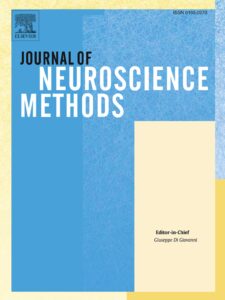Publications

Creation of myofascial pain syndrome-like muscle by artificial electrical stimulation and stretching treatment
Authors: Akihiro Kaizu, Yoshiyuki Tsuboi
Affiliations:
Department of Physiology, Nihon University School of Dentistry, 1-8-13 Kandasurugadai, Chiyoda-ku, Tokyo, 101-8310 Japan
Journal: Journal of Neuroscience Methods - June 2023, Volume 393, Article no. 109862 (DOI: 10.1016/j.jneumeth.2023.109862)
-
Field & Applications:
- Medical
- Animal studies
- Musculoskeletal disorder
- Temporomandibular disorder
Background: Myofascial pain syndrome (MPS) is a common chronic pain disorder characterized by muscle hardness, low extensibility, restriction of range of motion (ROM) and pain with trigger point (TP). Eccentric contraction has been used in past animal studies of MPS. However, clinical experience suggests that concentric contraction is also involved in MPS formation.
New methods: In this study, we adopted artificial electrical stimulation to create artificial concentric contraction (ACC) in rat gastrocnemius muscle. After ACC, muscle hardness, torsion and range of motion (ROM) were compared between before ACC, after ACC, and stretching group. To clarify the association with pain, the expression of pERK in DRG were analyzed.
Comparison to existing methods: Previous animal studies have created MPS models by inducing eccentric contractions in muscles. In this study, full tetanus contraction of the gastrocnemius muscle was achieved via tibial nerve stimulation. This method substituted muscle contraction due to abnormal excitation.
Results: We found that artificial abnormal contraction (ACC) induced muscle hardness and ROM restriction. The pERK expression in DRG was increased by ACC. Analysis of muscle tissue sections revealed a meandeling structure in muscle fibers. The stretching treatment improved these indicators. These results were similar to feature of the MPS muscles.
Conclusions: The ACC caused by artificial electrical stimulation leads to the characteristic of MPS in rat gastrocnemius muscle. This ACC model can be one of the useful options for MPS analysis.
Keywords: myofascial pain syndrome, skeletal muscle, concentric contraction, stretch, pERK, pain
From the above results, the ACC model created in this experiment is thought to be a useful model that reproduces clinical symptoms by a mechanism different from eccentric contraction.


